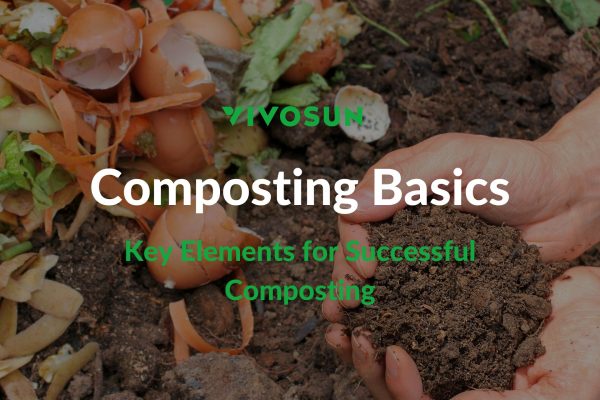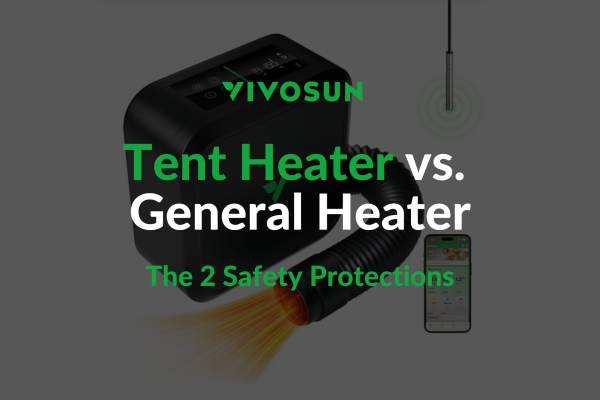Table of Contents

Overwatering is the most common mistake that growers will make, especially new growers. Of course, water is key for cannabis since cannabis consists of 80% water (just like you!). In this article, we’re going to break down the frequency and volume of watering for an average cannabis plant. Of course, how often and how much water cannabis is depends on the strain, whether it is auto-flowering, and what stage of growth it is in, so we will focus on generalities here.
How often do you water your weed plants? When you start growing, be sure to research your specific strain, contact your seed seller, or get in touch with a grower community or a forum for more information. There are ways to tell whether you’re overwatering or underwatering, so be sure to keep an eye on that, too. Finally, the last factor is the medium you’re growing in—we’ll focus on soil since that is the most common medium our growers use. How often do water cannabis?
To summarize, here are the factors that contribute to watering:
- Pot size
- Medium
- Health of plant
- Temperature and humidity
- Growth stage
We’ll break these down at the end of the article.
How often should you water cannabis?
Cannabis has different requirements for watering during different stages. The following recommended frequency of watering is concluded based on our experience. You can make some changes according to your situation. As a rule of thumb, if you press your finger into the soil and it feels dry up to your first knuckle (about 1 inch deep), or the pot is light, you can water.
Watering during different stages
Watering during Germination stage
During this stage, the goal isn’t “watering” as much as it is ensuring that the environment is moist enough to support germination. If you plan to germinate seeds directly in the soil, you’ll need to ensure the soil is moist and you may need to actually “add” water every 4-7 days.
Watering during Seedling stage
Cannabis doesn’t need much water during this stage. It might be tempting to overwater your seedlings because they are delicate, but please restrain yourself. Simply test whether the soil is damp by putting your finger into the soil to see if has dried out. If you are growing in a pot, you’ll likely find that you need to water every 3-7 days. This also depends on the size of the container.
Watering during Vegetative Stage
Cannabis needs more water in this stage than in the seedling stage since they begin to grow leaves and branches. As usual, stick your finger into the soil about 1 inch and see if it is damp. If it is, don’t water. If it is dry, add water. If your plant is in its forever home (a large pot), you’ll likely be watering every 2-4 days.
Watering during Flowering Stage
Watering in the flowering stage is a little challenging for growers since cannabis is mature and has different requirements for nutrients and usually soaks up water faster because it has flowers to produce. We recommend watering every 2-3 days but test your soil, as usual, to see if your plant even needs water.
There is a simple way to remember when to water cannabis:
When—If the soil is dry an inch deep, you can water. If the plants are drooping, you can water them.
How—For mature plants (and vegetative plants), fully soak the soil so that water runs through. Get even the deepest parts of the soil wet.
Measure—keep track of your watering schedule! Write it in a log so you can effectively watch your plant’s growth over time and know how your plant reacts to different watering stages.
How do I know if I am not watering correctly?
What are the signs of bad watering? Your plants will tell you. Check the leaves: If the leaves are wilted, curling, turning yellow, light, or crispy, you’re underwatering. If the leaves are soft, limp, fat, drooping, or floppy, you’re overwatering. The leaves should stand straight out and be proud of their shape. Cannabis plants are very communicative about how they’re feeling, just watch them.

Weigh the pot: If you’re very clever, you’ll weigh the pot when the soil is dry and weigh it again after watering—when the soil has absorbed enough water. You will know the weight differences before and after watering. Regularly weighing your pot can help you to decide when to water.
Stick your finger into the soil: You can also know when to water by checking the state of the soil—poke one finger about 1-2 inches into the soil. If the soil feels dry, it’s time to water.
Best time to water weed plants
- Early morning or late evening is ideal. Avoid watering when the sun is at its peak as the water can evaporate quickly and not reach the roots. The lower temperatures in the morning and evening help reduce evaporation.
- Water when the topsoil is slightly dry. About 1-2 inches of dryness on the top indicates it’s time to water again. Going by feel, the soil should no longer feel damp, but not completely dried out.
- Adjust watering schedule by growth stage. Seedlings and younger plants need more frequent watering. At peak flowering and fruiting stages, plants need more moisture. Reduce watering during dormant periods in winter.
- Outdoor plants may need daily watering in hot and dry weather. Check soil moisture frequently and don’t let it totally dry out.
- Indoor plants depend on conditions like temperature, humidity, air circulation etc. Check soil and water when the top looks dry. Mature plants may need watering 2-3 times a week.
- Early morning offers the most humid time of day. The increased humidity helps minimize evaporation after watering. Late evenings are next best for the same reason.
- Monitor your plants and soil. With experience, you’ll learn how often each plant needs watering based on your environment. Consistency is important for weed plants.
What’s the best way to water?
Optimal watering practices for cannabis cultivation are crucial for ensuring healthy plant growth and maximizing yields. Here’s how you can effectively water your cannabis plants while avoiding the pitfalls of overwatering or dehydration:
1. Spraying:
Spraying is ideal for young cannabis plants with delicate roots. Using a gentle spray nozzle helps prevent damage to the seedlings, especially during the vulnerable early stages of growth.
2. Manual Watering:
Once your cannabis plants enter the vegetation stage and require more water, manual watering becomes essential. Using cans, bottles, or hoses allows you to distribute water slowly and evenly around the plants, ensuring thorough hydration. Adding nutrients and adjusting pH and EC levels is crucial during manual watering to support optimal plant health and growth.
3. Drip Irrigation:
While drip irrigation requires initial investment, it offers long-term benefits in terms of water and time savings. This method delivers water and nutrients to plants through slow, automated drips, ensuring each plant receives the right amount of water with high precision. Drip irrigation systems can be controlled remotely via apps, providing convenience and flexibility for growers.
Autoflower Water Schedule
[wptb id=6216]
Factors that affect watering
- Pot size: You’re commended to provide the proper pot or grow bag for your plants. You can start germinating seeds with small pots since they prefer less water in the seeding stage, and then upgrade the pots according to their growth. Make sure your pots have good drainage, there is a hole at the bottom of your pots—the extra water will drain out naturally. Be aware, that if water can’t drain out it will take a long time to evaporate and you’ll be more likely to grow mold or attract pests. Standing water causes a number of problems, including root rot and fungus.
- Growth stage: The need for water increases with the growth of cannabis. Keep observing your plants, they will tell you if they need water or not.
- Temperature and humidity: This is easy to understand. The higher the temperature, the faster the evaporation, but the higher the humidity. Conversely, the lower the humidity level, the slower the evaporation and the lower the humidity. When growing cannabis, your temperature range will not be too large, but it is something to keep in mind. You might need a hydro-thermometer to test these two data.
- Medium: The soil type will also affect watering. Perlite and coco coir are widely used media. Perlite is acidic lava rock from volcanic eruptions that can absorb 2-3 times its own weight in water. Therefore, perlite is often added to the soil to help drain excess water. Coco coir is a natural fiber extracted from coconut shells and is also used to increase the water retention capacity of the soil. Both of these change how often you’ll need to water and cut down on the risk of overwatering and root rot.
Watering is not as easy as it looks. You need to consider a lot of factors but luckily the tried and true method of knowing when you need to water is simple: stick your finger into the soil, if it is dry then you can water. But, if you want to get scientific, the frequency and amount of watering can be calculated carefully—you’ll get much better results this way.
Make sure you’re tracking all of your watering throughout the growth cycle of your plant, and watch how your plant reacts, so you’ll know how to alter your schedule to fit your plant’s needs. Your plants will reward you if you water them properly. When you see the resin on the buds, it’ll all be worth it!
As always if you have any questions you can message our Instagram or Facebook and we’ll be glad to help you out! Join our Facebook farmer’s community for even more exclusive surprises!
Subscribe to the Vivosun newsletter for growing tips, grower stories, and special offers, and get 10% off your first order!
We love the Vivosun Smart Grow System and we’re certain that you too will love it once you try it.

FAQs
How often should I water my weed plant?
There is no single definitive answer, as the watering frequency for cannabis plants can vary depending on several factors:
- Growth stage – Younger cannabis plants and seedlings require more frequent watering, as often as every 1-3 days. During peak vegetative and flowering stages, mature plants may need water every 2-4 days.
- Medium – Soil retains more moisture than hydroponics or coco coir. Plants in soil may only need watering every 3-5 days whereas hydro requires daily watering.
- Container size – Smaller pots need more frequent watering than bigger pots. Roots have less soil to access for moisture in small containers.
- Environment – Warmer and drier conditions cause faster water loss, requiring more frequent watering. Indoor plants may need less watering than outdoor plants.
- Strain – Some cannabis strains are naturally more thirsty than others. Sativas often need more water than indicas.
- Plant health – Signs like drooping leaves indicate a plant needs water. Healthy robust growth means you can water less frequently.
In general, it’s best to check the soil moisture before watering. Water when the top inch of soil is dry but before the plant starts wilting. When in doubt, underwatering is better than overwatering cannabis plants. With experience, you will dial in the optimal watering frequency for your setup and plants.
Should I use nutrients every time I water?
No, you do not need to add nutrients every time you water cannabis plants. Here are some best practices on using nutrients:
- Seedlings and young plants often don’t need nutrients for the first few weeks. They live off the nutrients stored in their seed leaves.
- Wait until the plant is 2-3 weeks old before starting any nutrient regimen. Start with a quarter strength solution and gradually increase to full strength over time.
- Alternate plain pH balanced water and nutrient solution when watering. This helps prevent buildup of excess salts from the nutrients.
- During vegetative stage, use a grow/nitrogen heavy nutrient mix. In flowering, switch to a bloom/phosphorus-potassium heavy mix.
- Use half-strength nutrients if watering frequently. Too much nutrient too often can cause nutrient burn.
- Flushing with plain pH water every 2-3 weeks helps remove any excess nutrient salts built up in the medium/soil.
- Towards harvest, stop nutrients and just use pH water for 1-2 weeks. This flushing removes nutrients from the plant and provides a smoother smoke.
- After harvest and before the next grow cycle, flush the medium thoroughly to remove any remaining salts.
So in summary, use full strength nutrients every 2nd or 3rd watering, alternate with plain water in between, flush regularly, and reduce nutrients towards the end. Follow the nutrient schedule for optimal cannabis growth. Overfeeding is worse than underfeeding nutrients.






